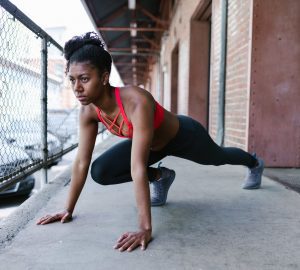Home workout is a great way to save money from gym memberships. It could also save you time and effort in going to the gym regularly. You might be shocked by how easy it is to get some exercise without leaving your house.
However, working out at home doesn’t mean you don’t have to follow simple safety precautions. Some preparations and planning are needed to prevent injuries when exercising.
Here are some tips to keep you safe during your home workout sessions:
1. Set-up your workout space
Although at-home workouts are meant to be fast and simple, that doesn’t mean you shouldn’t plan out your workout room. Set aside a part of your house as your fitness area. Even if you have little space, you could still get a decent workout.
To check if you have enough space, rotate with your arms out. Be sure that you would hit nothing while doing this. Also, scan for objects on the floor that might trip you while exercising. Remove these things and put them out of your reach.
In reality, if you don’t plan it through, you might end up stumbling, tripping, crashing, and harming yourself. With a safe space you could ultimately try rotational exercises for baseball. This routine could give you strength and body power.
2. Wear the proper attire
When you exercise from the convenience of your own house, it’s easy to ignore the benefit of appropriate fitness clothing. Clothe yourself as if you’re headed to the gym. Wearing fitness clothing and shoes could make you want to exercise more.
Wearing the right clothes and shoes would also provide safety during workout routines. For instance, if you’re doing high-intensity endurance training or resistance training, a training shoe with lots of lateral reinforcement is preferable. It could give you more stability.
3 .Warm-up
Warm-up exercises before doing workouts are vital aspects of training your body. It could improve your performance and lower the risk of injury. Warm-up for, at least, 10 minutes to avoid muscle fatigue and damage.
Warming up is intended to boost your pulse rate. This communicates to the entire body that it’s time to get to work. It could help steer blood supply to your muscles, allowing them to be more flexible. It could also enhance oxygen intake, particularly for your muscles.
4. Do Different Routines
Without a fitness coach, you might slip into a habit of repeating one type of workout day after day. Doing only one form of exercise every day could place undue pressure on a certain muscle group, increasing the risk of injury.
To avoid this, change routines with various types of movements so that you don’t overwork the same muscles. It’s important to find a balance between strengthening and cardio exercises, as well as the specific muscle groups you practice per day.
5. Pain Doesn’t Always Mean Gain
Exercising could be strenuous and cause fatigue. But, pain isn’t needed for an exercise to be effective. Discomfort when exercise may be a warning sign of muscle strain or a torn ligament. When exercising, you may feel tempted to work through the discomfort. You should still listen to your body.
6. Keep Hydrated
It could be difficult to keep track of your hydration state while you’re working out at home. If you’re dehydrated, you might feel exhausted easily and have less stamina than normal. Dehydration may have a huge impact on your performance during workouts.
Make it a point to drink water before and after the workout to keep you from dehydration. This could also ensure that the water you lost during the workout will be replenished.
7. Know Your Limits
When working out at home, you don’t have easy access to a personal instructor. So, understanding your limits is crucial, particularly if you’re lifting weights. Consult a professional trainer to decide how much weight you could comfortably lift, and incorporate it into your home fitness regimen.
The same principles extend to aerobic workouts. If you can’t run quicker or farther, don’t do it. Consider the talk test, which is a tried-and-true method of measuring workout speed. Consult a personal trainer to decide the right and easiest cardio workout for you.
Have Fun
Your home workout routines should be beneficial to both your mind and body. These tips could help you get ready for a good workout by maximizing both your efficiency and the safety of your exercises. Have fun with the workout you’re doing, be active, and enjoy the motions.









